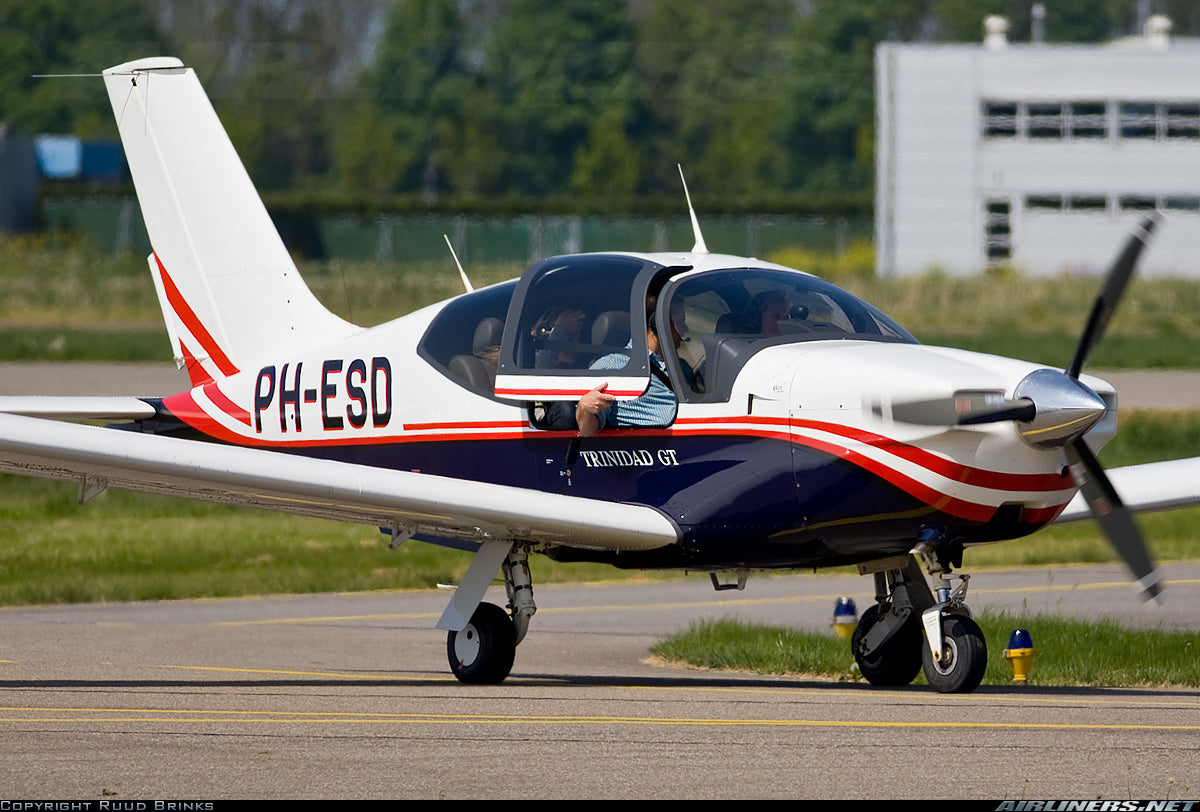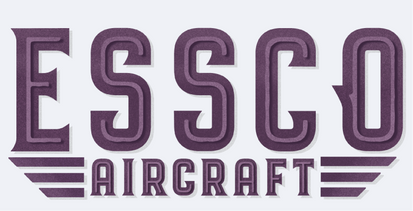
Number 100 of 100 in 100: The Socata TB Series ✈️
Conceptualization:
By the mid-1970s, SOCATA, a subsidiary of Aérospatiale, began developing the TB series with the ambition of entirely replacing the Rallye series with a more modern, capable, and efficient family of general aviation aircraft. The late 1970s and early 1980s marked a shift in general aviation, with an increasing emphasis on ergonomics, higher cruising speeds, and modernized flight decks. To remain competitive, SOCATA sought to introduce a new family of aircraft that could meet these evolving demands.
The result was the SOCATA TB series, a family of aircraft tailored for both personal ownership and flight training institutions. These aircraft were designed with superior cabin comfort, stable flight characteristics, and a refined control feel, making them appealing to a broad range of pilots. The TB series reflected a broader industry trend toward aerodynamically efficient designs and modernized cockpits, placing it in competition with American-built aircraft such as the Cessna 172, Piper Archer, and Beechcraft Sierra. By offering a blend of European design sophistication and practical flying capabilities, SOCATA successfully introduced a line of aircraft that catered to evolving pilot expectations. While the TB series did not completely replace the Rallye, it eventually succeeded it in several market segments, offering a more refined and performance-oriented alternative.
Original Design:
One of the defining features of the TB series is its gull-wing doors, a rare design choice in general aviation aircraft. These top-hinged doors not only enhance the aircraft’s modern appearance but also provide easier entry and exit for pilots and passengers compared to traditional side-hinged doors. Another notable aspect of the design is the large, wraparound windows, which significantly improve visibility, making the aircraft well-suited for training and cross-country flights.
Inside, the TB series features a spacious and comfortable cabin designed with an emphasis on ergonomics. The layout of the controls and instrument panel is intuitive, reducing pilot workload and making it a comfortable aircraft for long flights. The TB-9 Tampico and TB-10 Tobago models were introduced as fixed-gear trainers, while the TB-20 Trinidad and TB-21 Trinidad TC offered retractable landing gear and higher performance, catering to experienced pilots looking for a capable touring aircraft.

Photo Credit: airliners.net - Robert Frola ~ TB20
Principal Designer:
The SOCATA TB series was designed by the engineering team of French aircraft manufacturer SOCATA in the late 1970s. The aircraft featured a sleek, ergonomic cabin that set it apart from its competitors, with a focus on comfort and user-friendly controls. This modern design provided excellent visibility and a well-organized cockpit layout, making the TB series a popular choice for both training and touring. Following the success of the TB aircraft, SOCATA went on to develop the TBM series, including the TBM 700, a high-performance single-engine turboprop that became a favorite among business and personal aviation users.
Production Run:
The SOCATA TB series entered production in 1979, with the TB-9 Tampico and TB-10 Tobago being the first models to receive certification. The TB-21 Trinidad was later introduced, featuring a 250-horsepower Lycoming TIO-540 engine and retractable landing gear, catering to pilots seeking a higher-performance touring aircraft. These models quickly gained popularity among flight schools, private pilots, and aviation enthusiasts due to their modern design, responsive handling, and comfortable cabins. Over time, SOCATA refined the series, introducing additional models such as the TB-200 Tobago XL and the TB-21 Trinidad TC, a turbocharged variant designed for high-altitude operations.
Production remained steady through the 1980s and 1990s, with the aircraft finding a strong following in Europe and North America. However, as general aviation sales declined in the early 2000s, in particular following 9/11, SOCATA significantly scaled back production. By 2003, production numbers had dropped, and while some models were still available through build-to-order manufacturing, full-scale production effectively ceased by the early 2010s. In total, 2,150 aircraft were built, many of which remain actively flown today, particularly in training institutions and private ownership. Despite its discontinuation, the TB series remains well-regarded for its blend of performance, comfort, and European design sophistication.
Evolution:
As the TB series matured, SOCATA introduced several enhancements to improve its performance and appeal. The TB-9 and TB-10 were designed for training, featuring fixed landing gear and smaller engines, while the TB-20 and TB-21 were built for pilots looking for higher speed and cross-country capability. The TB-21 Trinidad TC, in particular, came equipped with a turbocharged Lycoming TIO-540 B1AD engine, allowing it to maintain performance at high altitudes.
In the early 2000s, SOCATA introduced Generation Two (GT) models, incorporating a larger cabin, improved aerodynamics, and updated avionics. These refinements made the aircraft even more competitive, though production slowed as market demand shifted. Despite no longer being manufactured, the TB series remains a respected aircraft, valued for its modern styling, ease of use, and strong performance.

Photo Credit: airliners.net - Jonathan Rankin ~ TB9
Specifications:
TB 21 Trinidad TC Specifications:
General Characteristics:
- Crew: 1
- Capacity: 4 passengers
- Length: 7.75 m (25 ft 5 in)
- Wingspan: 9.85 m (32 ft 4 in)
- Height: 2.85 m (9 ft 4 in)
- Airfoil: RA 16 3C3
- Empty weight: 911 kg (2,008 lb) EFIS and MTV 9 propeller
- Max takeoff weight: 1,400 kg (3,086 lb)
- Fuel capacity: 336 Liters (88.8 U.S. Gallons)
- Powerplant: 1 × LYCOMING TIO-540-AB1AD Six-cylinder, horizontally opposed, direct drive, air-cooled and fitted with an automatically regulated turbocharger, 190 kW (250 hp)
- Propellers: 2-bladed Hartzell (option for 3 bladed MT-propeller)
Performance:
- Cruise speed: 280 km/h (170 mph, 150 kn)
- Stall speed: 109 km/h (68 mph, 59 kn) Full flaps
- Never Exceed Speed: 350 km/h (217 mph, 189 kn)
- Range: 2,060 km (1,280 mi, 1,110 nmi) At 65% power at 25000 feet, with reserve
- Service ceiling: 7,600 m (25,000 ft)
- Rate of climb: 5.6 m/s (1,100 ft/min)
In Comparison to Other Aircraft in its Class:
When comparing the SOCATA TB-21 Trinidad TC to other aircraft in its class, it stands out as a comfortable, capable cross-country performer with a modern design and strong high-altitude performance. Competing models such as the Mooney M20K 231, Beechcraft Bonanza A36, and Cessna 182T Skylane serve similar missions, but each comes with its own trade-offs. The TB-21’s 250-hp turbocharged Lycoming TIO-540-AB1AD delivers a cruise speed of 150 knots, placing it roughly on par with the Cessna 182T (145 knots) but slower than the Mooney M20K 231 (175 knots) and Bonanza A36 (165 knots). However, where the TB-21 truly shines is high-altitude capability—its service ceiling of 25,000 feet is significantly higher than the Cessna 182T (18,100 feet) and Bonanza A36 (18,500 feet), making it an excellent choice for pilots operating in high-density altitude environments.
The TB-21’s range of 1,110 nautical miles at 65% power is competitive, surpassing the Cessna 182T’s 930 nm range. In terms of cabin comfort and ergonomics, the TB-21 features one of the most spacious cabins in its class, with a wider interior than the Mooney and comparable to the Bonanza, making it a favorite among long-distance travelers who prioritize comfort. Additionally, its stall speed of 59 knots is relatively low, making it more forgiving on landing than the Mooney M20K (57 knots) and on par with the Bonanza A36 (56 knots).
Overall, the TB-21 strikes a strong balance between speed, altitude performance, and comfort, offering a stylish, high-flying alternative to traditional American-made general aviation aircraft.
Performance:
Socata TB20 Trinidad Performance Envelope:
V-Speeds:
- V_NE (Never Exceed Speed): 187 KIAS
- V_NO (Maximum Structural Cruising Speed): 149 KIAS
- V_A (Maneuvering Speed): 129 KIAS
- V_FE (Maximum Flap Extended Speed):
- Flaps Takeoff Position: 129 KIAS
- Flaps Landing Position: 103 KIAS
- V_LE (Maximum Landing Gear Extended Speed): 139 KIAS
- V_LO (Maximum Landing Gear Operating Speed): 129 KIAS
- V_S (Stall Speed, Clean Configuration): Approximately 70 KIAS
- V_SO (Stall Speed, Landing Configuration): Approximately 59 KIAS
G-Load Limitations:
- Flaps Up: +3.8g / -1.5g
- Flaps Down: +2.0g / 0g
Performance Assessment:
The SOCATA TB20 Trinidad offers a well-balanced performance envelope that blends stability, speed, and control authority, making it an excellent aircraft for both cross-country flying and advanced training. With a never exceed speed (V_NE) of 187 knots, it provides a respectable top-end performance, while the maximum structural cruising speed (V_NO) of 149 knots ensures a solid balance between efficiency and safety in turbulent conditions. The maneuvering speed (V_A) of 129 knots is generous, allowing pilots to handle turbulence and control deflections confidently. Additionally, the stall speeds (V_S at 70 knots clean, V_SO at 59 knots with full flaps) indicate that the TB20 remains predictable and manageable in slow-speed operations, an important factor for safety during approaches and landings. The flap and landing gear speeds are well-calibrated, giving pilots flexibility during descent planning without excessive speed constraints.
Structurally, the TB20 is built to handle moderate aerobatic loads, with G-load limitations of +3.8g and -1.5g flaps up, and +2.0g with flaps down. These numbers suggest that while it is not an aerobatic aircraft, it is strongly built for general aviation and IFR conditions, allowing pilots to maneuver with confidence in demanding situations. Compared to some competitors, the TB20's performance envelope leans more toward stability and comfort rather than outright speed. Its low stall speeds and solid structural limits make it a reliable aircraft for pilots transitioning into more advanced, complex singles, while its smooth handling and well-designed airframe make for a refined flying experience, particularly on long cross-country flights.

Photo Credit: airliners.net - Bernd Borchert ~ TB10
Safety Record:
The SOCATA TB series maintains a strong safety record, comparable to other aircraft in its category. While gear-up landings have been reported, these incidents are often attributed to pilot error or maintenance oversight rather than mechanical flaws. Some aging TB models have also shown signs of internal corrosion, particularly around fuel tanks and structural components, reinforcing the importance of thorough pre-purchase inspections.
In terms of overall safety performance, the TB series aligns well with its competitors, such as the Beechcraft Bonanza and Mooney M20. Many of the accidents involving the TB series are linked to weather-related issues, pilot disorientation, or failure to follow proper maintenance procedures, rather than inherent design shortcomings.
Conclusion:
The SOCATA TB Series represents a unique blend of European craftsmanship, modern design, and reliable flight performance. With comfortable cabins, stable flight characteristics, and solid cross-country capability, it remains a sought-after aircraft for private owners and flight schools alike. Though no longer in production, the TB series continues to fly in large numbers, proving that good design never goes out of style.

Photo Credit: airliners.net - Schmitt TB21
Bibliography:
Airliners.net – Socata TB Series
Essco Links:
